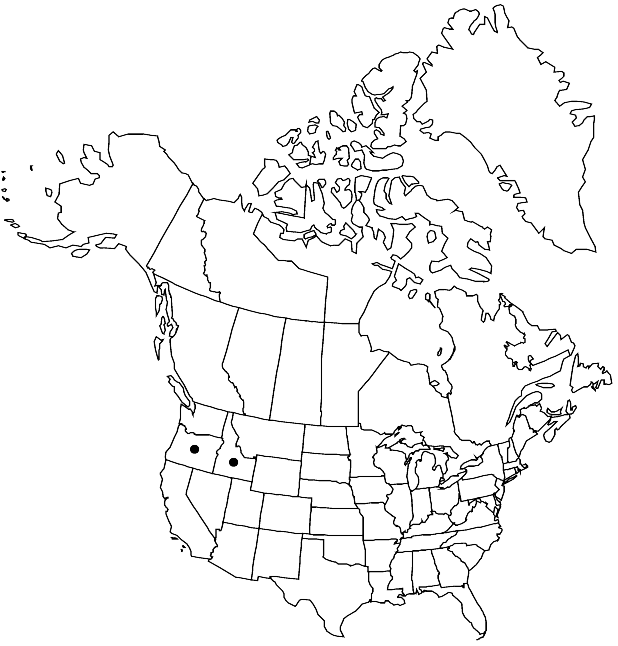Stanleya confertiflora
Fl. N.W. Amer., 59. 1897.
Annuals or biennials; (glaucous), glabrous throughout. Stems erect, unbranched, (slightly ribbed), 2–6 (–8) dm. Basal leaves (often withered by flowering); blade obovate to ovate, margins entire. Cauline leaves sessile; blade (fleshy), lanceolate, (2.2–) 4–13 (–16) cm × (5–) 10–30 (–40) mm, (smaller distally, base auriculate to sagittate), margins entire. Racemes dense, (slightly or not elongated in fruit). Fruiting pedicels horizontal to divaricate-ascending, 10–20 (–26) mm. Flowers: sepals oblong-linear, 6–12 mm; petals yellow becoming whitish, narrowly linear to filiform, (12–) 14–25 × 0.5–1.5 mm, (margins crisp), claw (nearly linear), 5–11 mm, slightly wider at base; filaments 12–17 mm; anthers 3–4.5 mm; gynophore (6–) 10–18 mm. Fruits suberect to divaricate-ascending, slightly curved inward, (torulose), subterete, 2–5.2 (–6) cm × 1.5–2.2 mm; ovules 40–62 per ovary; style 0.6–1.7 mm. Seeds oblong, 1.5–2.5 × 0.8–1 mm.
Phenology: Flowering Apr–Jun.
Habitat: Barren clay slopes in sagebrush communities, heavy clay flats, loose soil mounds, dry sandy grounds, alkaline meadows and flats
Elevation: 600-1500 m
Discussion
Of conservation concern.
Stanleya confertiflora is distributed in Gooding, Owyhee, and Washington counties in Idaho, and in Baker, Harney, and Malheur counties in Oregon.
Selected References
None.
Lower Taxa
"elongated" is not a number."thick" is not a number."dm" is not declared as a valid unit of measurement for this property."dm" is not declared as a valid unit of measurement for this property.
